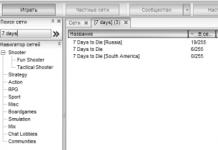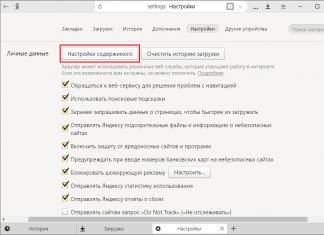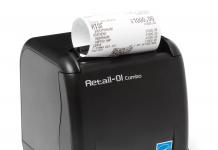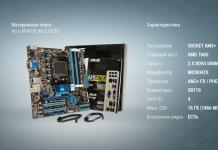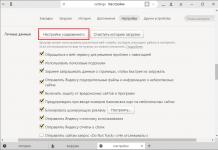My new post will be devoted to the Crypto Pro program, it seems to be nothing complicated, but all the time I have problems with this software, either because I have to deal with it once or twice a year or because the software is like that, but in general I decided to make a reminder for myself and for you.
Task: Provide access to the Kontur Extern program on two machines, OK, let's get started.
What we have: One already working key on the SD card.
What you will need: We need any media SD card, USB flash drive can also be uploaded to the registry or you can use the so-called RUtoken. I will install on RUtoken, and you can use any of the options.
Yes, just a small note, if you have a domain computer, it is better to do all this under the administrator account.
And so let's get started
Find the program in the start menu or control panel,
Let's launch the program.
Go to the tab Service and press the button Copy.


You will be required to enter a password of any 8 characters. Enter the password and press Further.

In the next window, we need to set the name of the container (I always use the one that is convenient for me; we have 2 organizations and I use the name-01 and 02 markings; you can also use the organization’s TIN for separation.) and then click the button Finish.
Here you will once again need to enter the password for the new container, make the same one and click OK.

In the next dialog box, you need to select the media where to copy our container, I select RUtoken and you need to select the media where you are going to install the container.
Once you have chosen, click the button Further. Then Finish.
That's basically it, the key has been copied. All that remains is to install it for a specific user.

There are two options here:
Option 1.
Go to CryptoPro again, open the service tab and click on the button View the certificates in the container.

In the dialog box that opens, open the container we need and click the button OK. then press the button Further.

In the next window, click the U button become, if it is not there, press button C troops.

In the window that opens, click the U button install a certificate. The certificate import wizard will open where you need to click Further.

In the window that opens, you need to leave everything as it is and click Further.
If the certificate is installed successfully you should see the following dialog box.

Option 2.
Installation via the menu install a personal certificate.
To install the certificate, we need the certificate file itself (a file with the extension .cer) it is located on the media where we copied it, in my case it is rutokin.
And so, open CryptoPro again and go to the tab Service and press the button Install a personal certificate.

In the window that opens, find this certificate by clicking on the button Review.
In the next dialog box, check the box next to Find container automatically, after which the program will automatically find the container you need. Then click the button Further.

Then a window may appear asking you to select the storage location for the certificate; you need to select Private and click the button OK.
Then a dialog box may appear where you need to click a button Yes.

Then wait for a message about successful installation.
Then you need to remove your device to which the container with keys refers and insert it back, after the device is found you can try.
If you have any questions because there may be various changes in different versions of CryptoPro, please leave your comments, I will always be happy to help you.
Almost every organization has some kind of electronic key. They are widespread and without them it is almost impossible to conduct any activity. They are needed for signing reporting documents and for many other things. Therefore, those who serve the IT sector in the organization need to know what it is. For example, today we’ll talk about how to copy a certificate from the registry and transfer it to another computer.
How to copy a certificate from the registry to a flash drive
Let's imagine you come to an organization and you need to set up access to a portal for a new employee. You don’t have an electronic key and you don’t know where to get one. In this case, the easiest way is to copy it from the computer on which it is installed. To do this, take a clean flash drive and launch Crypto Pro. Start - All programs - Crypto Pro - Certificates. In general, it is better to store copies of the keys on a separate flash drive in your closet.

In the window that opens, go to the Composition tab and click Copy to file at the bottom.

The certificate export wizard will open on the first tab, click next. You need to specify whether to copy the private key or not. We don’t need it yet, so we’ll leave everything as it is.

Now we mark the required certificate format; in most cases, you need to leave everything here by default.

How to copy a private key from the registry
Some certificates require a private key. It can also be copied from the registry to a flash drive. This can also be done simply by launching Crypto Pro. Go to the service tab and select Copy.


Enter a new name and click Finish.

In the window that opens, select the flash drive.
If a flash drive or floppy disk is used for work, copying can be done using Windows (this method is suitable for versions of CryptoPro CSP no lower than 3.0). The folder with the private key (and the certificate file, if any) must be placed in the root of the flash drive (floppy disk). It is recommended not to change the folder name when copying.
The private key folder should contain 6 files with the extension .key. Below is an example of the contents of such a folder.
Container copying can also be done using the CryptoPro CSP crypto provider. To do this you need to follow these steps:
1. Select Start / Control Panel / CryptoPro CSP.
2. Go to the Tools tab and click on the Copy button. (see Fig. 1).

Rice. 1. “CryptoPro CSP Properties” window
3. In the window Copying a private key container press the button Review(see Fig. 2).

Rice. 2. Copying the private key container
4. Select a container from the list, click on the button OK, then Further.

Rice. 3. Key container name
6. In the “Insert and select media to store the private key container” window, you must select the media on which the new container will be placed (see Figure 4).

Rice. 4. Selecting a blank key media
7. You will be prompted to set a password for the new container. Setting a password is optional, you can leave the field blank and click on the button OK(see Fig. 5).

Rice. 5. Setting a password for the container
If copying to media Rutoken, the message will sound different (see Fig. 6)

Rice. 6. Pin code for container
Please note: if you lose your password/pin code, using the container will become impossible.
8. After copying is completed, the system will return to the tab Service in the window CryptoPro CSP. Copying is complete. If you plan to use a new key container to work in the Kontur-Extern system, you must install a personal certificate (see How to install a personal certificate?).
For bulk copying, download and run the Certfix utility.

If the electronic signature was issued to the PC registry, then you can copy it to media using the following instructions.
Step 1. Open CryptoPro and go to the “Service” tab, then click on the “Copy” button as shown in the instructions.
Step 2. In the window that appears, click the “Browse” button to select the electronic signature container you need to copy.

Step 3. In the list of existing containers that appears, select the container you need, which you need to copy to the media and click the “OK” button.

Step 4. Confirm the action by clicking the “Next” button in the window that appears

Step 5. In the window that appears, specify the name of the new container that will be created on the media. The name in the field is entered automatically, so you can simply leave it unchanged. Click the "Done" button.

Step 6. A media selection window will appear. Select the desired medium from the list to which you want to copy the electronic signature. In order to understand which media to select from the list, look at the “Inserted media” field: it will either say “Media is missing,” which means you have selected a non-existent media, or the media name will appear similar to the name in the screenshot. Select and click OK.

Step 7. After you select the media, a window will appear to enter the PIN code for the new electronic signature container. We recommend entering the standard PIN code “12345678”, because... clients often forget or lose their PIN codes, after which the electronic signature has to be reissued. You can set your (different) PIN if you are sure that you will not lose it. After entering the PIN code, click the "OK" button.

Ready. Now the electronic signature container has been copied to the selected medium and you can use it.
If you don’t want to understand these details, we will help. You can even call our engineer to your office.
Copying using Windows
If you use a floppy disk or flash drive for work, you can copy the container with the certificate using Windows (this method is suitable for versions of CryptoPro CSP no lower than 3.0). Place the folder with the private key (and, if there is one, the certificate file - the public key) in the root of the floppy disk / flash drive (if you do not place it in the root, then working with the certificate will be impossible). It is recommended not to change the folder name when copying.
The folder with the private key should contain 6 files with the extension .key. As a rule, the private key contains a public key (the header.key file in this case will weigh more than 1 KB). In this case, it is not necessary to copy the public key. An example of a private key is a folder with six files and a public key is a file with the .cer extension.

Private key Public key
Copy to Diagnostics profile
1. Go to the “Copying” Diagnostics profile using the link.
2. Insert the media to which you want to copy the certificate.
3. On the desired certificate, click on the “Copy” button.

If a password has been set for the container, the message “Enter the password for the device from which the certificate will be copied” will appear.

4. Select the media where you want to copy the certificate and click “Next”.

5. Give the new container a name and click on the “Next” button.

6. A message indicating that the certificate was successfully copied should appear.

Bulk copy
- Download and run the utility. Wait for the entire list of containers/certificates to load and select the required checkboxes.
- Select the Bulk Actions menu and click on the Copy Containers button.

3. Select the storage media for the container copy and click OK. When copying to the registry, you can check the box “Copy to the key container of the computer”, then after copying the container will be available to all users of this computer.

4. After copying, click the “Update” button at the bottom left.
If you want to work with copied containers, you need .
Copying using CryptoPro CSP
Select “Start” > “Control Panel” > “CryptoPro CSP”. Go to the “Service” tab and click on the “Copy” button.

In the Copy Private Key Container window, click on the Browse button .

Select the container you want to copy and click on the “Ok” button, then “Next”. If you are copying from a root token, an input window will appear in which you should enter a pin code. If you have not changed the pin code on the media, the standard pin code is 12345678.

Create and manually specify a name for the new container. Russian layout and spaces are allowed in the container name. Then click "Done".

In the Insert Blank Key Media window, select the media on which the new container will be placed.

You will be prompted to set a password for the new container. We recommend that you set a password that is easy for you to remember, but that others cannot guess or guess. If you do not want to set a password, you can leave the field blank and click OK.
Do not store your password/pin code in places where others have access. If you lose your password/pin code, using the container will become impossible.

If you copy the container to a ruToken smart card, the message will sound different. In the input window, enter your pin code. If you have not changed the pin code on the media, the standard pin code is 12345678.

After copying, the system will return to the “Service” tab of CryptoPro CSP. Copying is complete. If you plan to use a new key container to work in Externa, .







